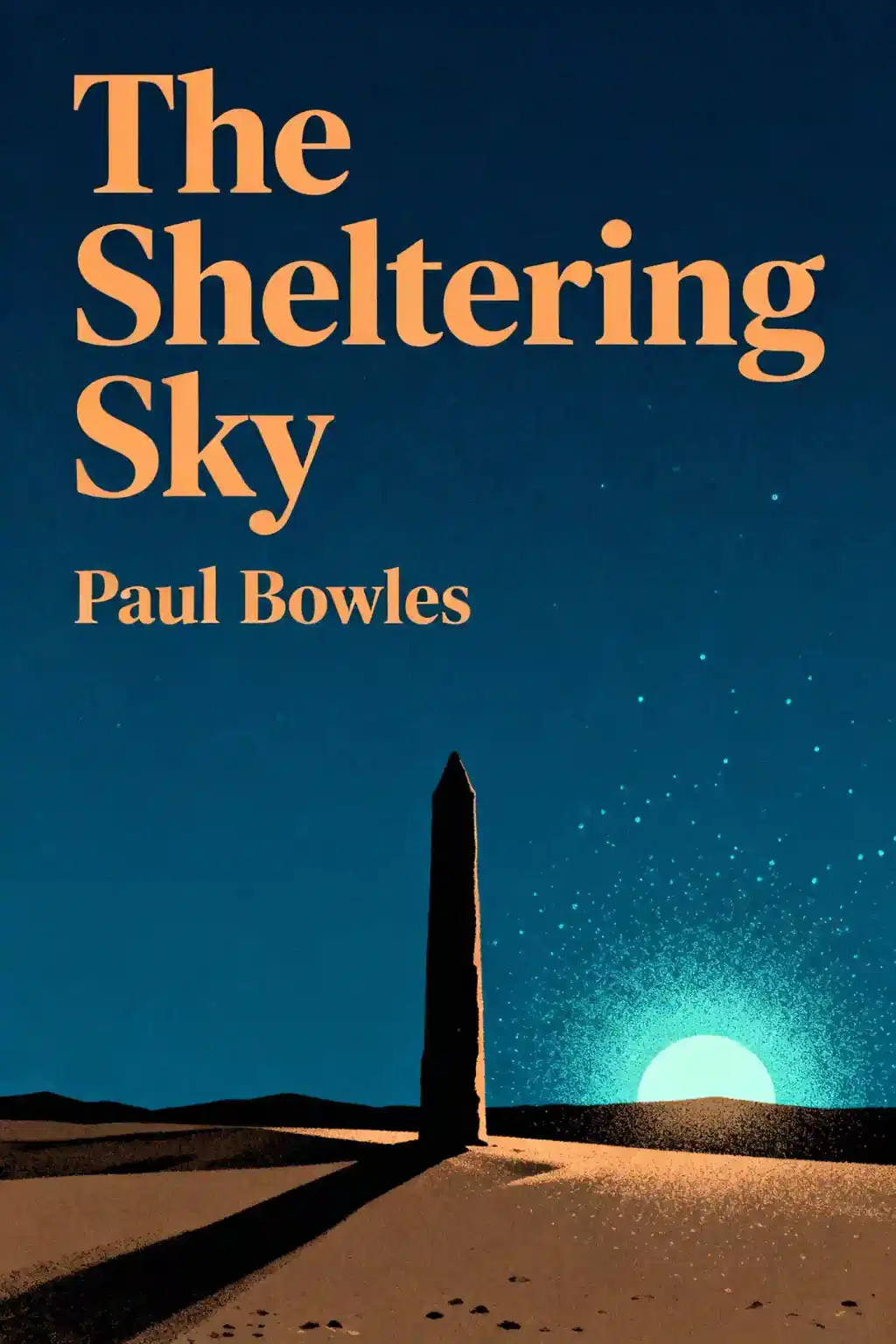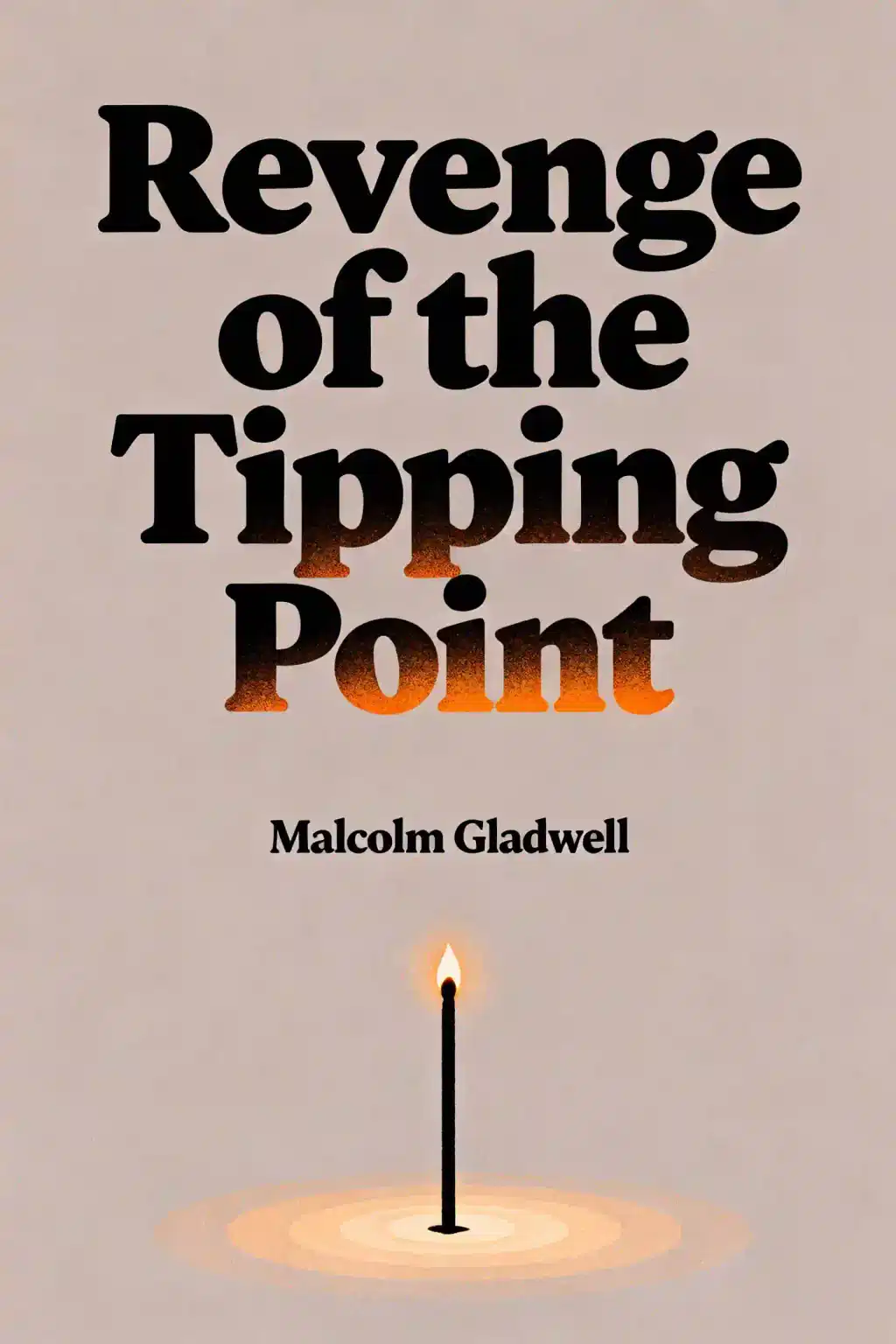
The Sheltering Sky by Paul Bowles Summary
In the vast, shimmering desert, three Americans confront their inner demons. Norman Mailer credited Bowles with "opening the world of Hip" through this existentialist masterpiece that made TIME's best novels list and inspired Bertolucci's award-winning film starring Malkovich.
About the author
Paul Bowles was an American writer and composer whose debut novel, The Sheltering Sky, established him as a master of existential and psychological fiction. Published in 1949, this psychological realism masterpiece explores themes of alienation, nihilism, and cultural dislocation against the stark backdrop of post-World War II North Africa.
Bowles drew from his own experience as an expatriate who lived in Morocco for over 40 years, bringing unparalleled authenticity to his portrayal of Western travelers confronting an indifferent desert landscape. Before turning to fiction, Bowles composed music for prominent directors including Orson Welles and Joseph Losey.
He wrote The Sheltering Sky while traveling alone through the Algerian Sahara, working in hotels across the desert. Beyond writing, he collected and recorded ethnic Moroccan music for the American national library and translated works by local authors into English. The Sheltering Sky was recognized by Time magazine as one of the 100 Best English-language Novels from 1923 to 2005 and adapted into a 1990 film by Bernardo Bertolucci starring John Malkovich and Debra Winger.
FAQs About This Book
The Sheltering Sky is a 1949 novel by Paul Bowles that follows Port and Kit Moresby, a troubled married couple from New York who travel to North Africa's Sahara desert with their friend Tunner. The story chronicles their psychological and physical disintegration as they venture deeper into the desert, with Port dying of typhoid and Kit descending into madness. This existential novel explores themes of alienation, despair, and the fragility of civilized life when confronted with an indifferent universe.
The Sheltering Sky is ideal for readers seeking profound psychological depth and existentialist literature that challenges conventional thinking. Those interested in atmospheric, character-driven narratives exploring human vulnerability, alienation, and the limits of endurance will find this novel compelling. It's also recommended for readers who appreciate unflinching portrayals of human relationships under extreme duress and aren't deterred by dark, nihilistic themes. Fans of post-war literature examining disillusionment and the search for meaning will appreciate Paul Bowles' stark vision.
The Sheltering Sky is worth reading for its masterful psychological exploration and luminescent prose that creates an immersive, almost hallucinatory desert experience. Time magazine included it in their 100 Best English-language Novels from 1923 to 2005, and the Modern Library ranked it #97 on their best of the century list. The novel offers a convincing portrait of nihilism in the modern world with vivid descriptions that make the Sahara landscape unforgettable. However, readers should expect a challenging, unsentimental narrative about human disintegration.
Paul Bowles was an American writer and composer who lived as an expatriate in Morocco for over 40 years, giving The Sheltering Sky unparalleled authenticity in depicting North African culture and landscapes. His intimate knowledge of the region and colonial dynamics deeply informs the novel's critical perspective on Western travelers' encounters with foreign cultures. Bowles' philosophical leanings toward existentialism and nihilism, combined with post-World War II disillusionment, shaped the novel's exploration of meaninglessness and confrontation with an indifferent universe.
The Sheltering Sky explores existential despair, alienation, and the fragility of civilized instincts when tested against brutal, primitive environments. The novel examines the disintegration of the psyche, with Port and Kit discovering they lack inner reserves or hope when stripped of their defenses. Other major themes include:
- The futility of human desires against an indifferent universe
- The breakdown of marriage under extreme duress
- Post-war disillusionment with Western civilization
Colonial dynamics and the impossibility of true cross-cultural understanding also feature prominently throughout Paul Bowles' narrative.
The Sahara desert in The Sheltering Sky functions as more than mere backdrop—it's a powerful, almost sentient character representing indifference and the void within the protagonists themselves. The desert's vastness mirrors the characters' internal emptiness and existential crises, serving as a hostile force that tests their psychological limits. Paul Bowles stated the book is "about the desert, not about people. The desert does away with people." The landscape symbolizes an abstract, alienating space that strips away civilized facades to reveal human fragility and meaninglessness.
Port Moresby contracts typhoid fever during their North African journey and dies after suffering delirious agony in a remote desert town called Sbâ. Before his death, he becomes increasingly disconnected from reality, unable to communicate and haunted by visions of blood and darkness as he reaches through "the sheltering sky". After Port's death, Kit becomes psychologically unraveled, eventually disappearing in Oran just before reuniting with their companion Tunner. Her descent involves sexual encounters, cultural dislocation, and ultimately a refusal to open her eyes or acknowledge reality.
The "sheltering sky" represents the illusion of protection and meaning that humans construct to shield themselves from confronting existence's void and meaninglessness. In Port's dying moments, he experiences piercing through this metaphorical fabric to reach "a point of darkness and gateway to repose". The title suggests the sky acts as a thin barrier between conscious life and the absolute nothingness or darkness that lies beyond. Paul Bowles uses this metaphor to explore how fragile our sense of security and identity becomes when faced with mortality and existential truth.
Critics have noted that The Sheltering Sky presents problematic colonial perspectives, with North African people represented as embodiments of the hostile desert rather than as fully realized individuals. The novel suggests it's "impossible and indeed undesirable to relinquish colonial authority" and links contact with "natives" to insanity. Some scholars argue Paul Bowles perpetuates the view that colonized lands are "alienated from the people who live on it," ignoring that people have coexisted with the Sahara for millennia. The portrayal of Kit's madness as resulting from cultural contamination reflects dated Western anxieties about the "other."
The Sheltering Sky depicts marriage as fragile and provisional, with Port and Kit Moresby's relationship characterized by emotional distance, sexual estrangement, and inability to commit. Port has fallen out of love with Kit, leading her to briefly engage with Tunner, for whom she has no respect. Their North African journey, ostensibly an attempt to resolve marital difficulties, instead accelerates their disintegration as they discover they harbor no inner reserves to support each other. Paul Bowles presents their relationship as symptomatic of broader existential emptiness and selfishness under extreme circumstances.
The Sheltering Sky is considered Paul Bowles' most uncompromisingly existential work because it explores characters confronting an indifferent universe without hope or meaning. Port and Kit's journey forces them to face the fact they have "no reserves, no hope—for it is all too late—of anything better". The novel reflects existentialist philosophy through its portrayal of meaninglessness, the futility of human desires, and characters discovering their lack of essential self when stripped of societal structures. Their ultimate inability to find purpose or connection in the face of mortality exemplifies existential despair.
The Sheltering Sky was adapted by director Bernardo Bertolucci into a 1990 film starring Debra Winger as Kit and John Malkovich as Port, with a screenplay by Mark Peploe. The movie was filmed on location in Morocco, Algeria, and Niger, capturing the authentic North African landscapes central to Paul Bowles' novel. The film adaptation brought visual life to the novel's atmospheric desert settings and psychological intensity, translating Bowles' existential themes to cinema while maintaining the story's focus on the couple's deterioration in an alien environment.
Quick Summary Mode - Read or listen to The Sheltering Sky Summary in 9 Minutes
Break down key ideas from The Sheltering Sky into bite-sized takeaways to understand how innovative teams create, collaborate, and grow.
Flash Card Mode - Top 10 Insights from The Sheltering Sky in a Nutshell
Distill The Sheltering Sky into rapid-fire memory cues that highlight Pixar’s principles of candor, teamwork, and creative resilience.

Fun Mode - The Sheltering Sky Lessons Told Through 20-Min Stories
Experience The Sheltering Sky through vivid storytelling that turns Pixar’s innovation lessons into moments you’ll remember and apply.
Personalize Mode - Read or listen to The Sheltering Sky Summary in 0 Minutes
Ask anything, pick the voice, and co-create insights that truly resonate with you.

From Columbia University alumni built in San Francisco
See More Stories?

Get the The Sheltering Sky summary as a free PDF or EPUB. Print it or read offline anytime.
























